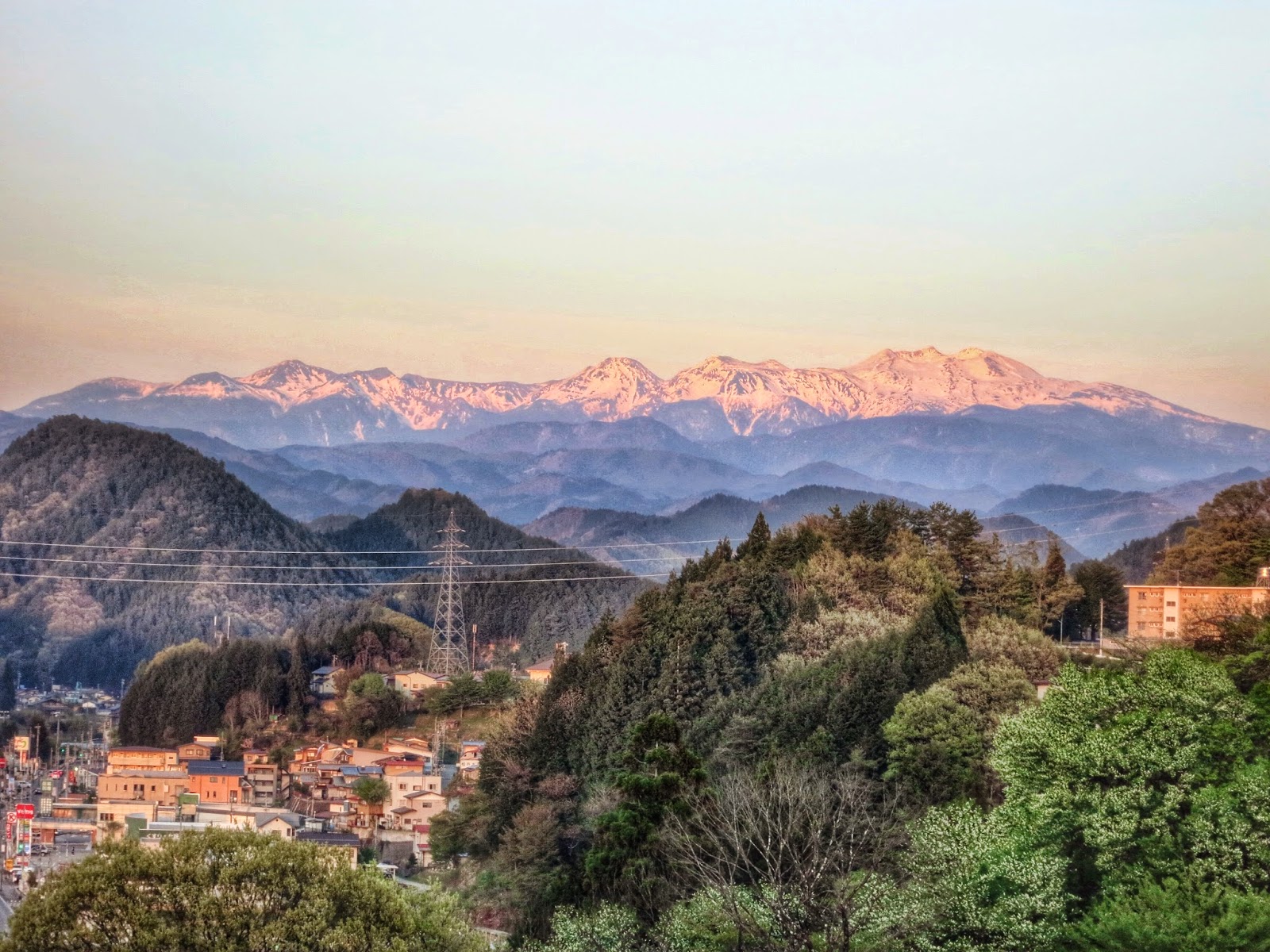The southern half of the old town, especially the Sannomachi Street, survives in a particularly pretty state with many old homes, shops and my favorite sake breweries. 100yen for unlimited times of sake tasting and you get to keep the cup for souvenir !!
 |
| You can identify sake by this ball of cedar leaves hanging outside each house |
Old town is my favorite part of Takayama. Every part of it looks incredibly surreal.....
As
a rule long ago, but still commonly today as well, sugidama are hung
just outside the front entrance to a sake brewery immediately after the
first sake of the year has been pressed (like – now!). At this point,
the leaves are still green, having been recently cut and used. Over the
next several months, however, the green needles slowly faded to brown.
It has long been said that when at long last the color had changed to
brown, the sake had aged enough to be ready for drinking. - See more at:
http://sake-world.com/wordpress/?p=273#sthash.rHsIzWEB.dpuf
As
a rule long ago, but still commonly today as well, sugidama are hung
just outside the front entrance to a sake brewery immediately after the
first sake of the year has been pressed (like – now!). At this point,
the leaves are still green, having been recently cut and used. Over the
next several months, however, the green needles slowly faded to brown.
It has long been said that when at long last the color had changed to
brown, the sake had aged enough to be ready for drinking. - See more at:
http://sake-world.com/wordpress/?p=273#sthash.rHsIzWEB.dpuf
As
a rule long ago, but still commonly today as well, sugidama are hung
just outside the front entrance to a sake brewery immediately after the
first sake of the year has been pressed (like – now!). At this point,
the leaves are still green, having been recently cut and used. Over the
next several months, however, the green needles slowly faded to brown.
It has long been said that when at long last the color had changed to
brown, the sake had aged enough to be ready for drinking. - See more at:
http://sake-world.com/wordpress/?p=273#sthash.rHsIzWEB.dpuf
Any part of Takayama is good for OOTD photo-taking ;)
 |
| White Top: Zara, Vest: Engellpeh, Jeans: ASOS, Espadrilles: Zara, Hat: Topshop |
As
a rule long ago, but still commonly today as well, sugidama are hung
just outside the front entrance to a sake brewery immediately after the
first sake of the year has been pressed (like – now!). At this point,
the leaves are still green, having been recently cut and used. Over the
next several months, however, the green needles slowly faded to brown.
It has long been said that when at long last the color had changed to
brown, the sake had aged enough to be ready for drinking. - See more at:
http://sake-world.com/wordpress/?p=273#sthash.rHsIzWEB.dpuf
Beautiful flowers along the way.... |
| This is one of my favorite pic !!! |
 |
| Pardon my big ass :p |
In the northeastern area of Takayama's old town stands Sakurayama Hachiman Shrine.
We stayed in Hagi Takayama (modern roykan style hotel). Not going to bore you with all my hotel room pictures. Here's one that I have to show, the view we had from their private onsen !!
 |
| Had to filter so you can clearly see the mountain covered with snow behind.. Ain't this lovely ?? |
I can do a showcase of the different types of Yukata after this trip !!! Love this color combination ;)
Before we end Takayama, it's food porn time ;) Recommended restaurant - Hidatakayama Kyoya !!
If you are planning a trip to Takayama, you are not going to miss the UNESCO world heritage site - Shirakawa-go. An hour bus ride to the remote mountains that span from Gifu to Toyama Prefectures. Famous for their traditional gassho-zukuri farmhouses, some of which are more than 250 years old !!
Welcome to the real life fairytale....
 |
| Mesmerized !!!! |
Well the rain did not dampen our mood in this beautiful place... Now I know why it has been declared the world heritage site !! More pictures of this little heaven on earth <3
Here's my OOTD !!! haha...
This place looks even more like in a fairytale during winter time !! Make this your next visit and I am sure you will be amazed by this amazing view !!
Gassho-zukuri means "constructed like hands in prayer", as the farmhouses' steep thatched roofs resemble the hands of Buddhist monks pressed together in prayer. The architectural style developed
over many generations and is designed to withstand the large amounts of
heavy snow that falls in the region during winter. The roofs, made without nails,
provided a large attic space used for cultivating silkworms. Now sleep on that <3
Hope you have been enjoying my travel posts.. Next up on the famous cormorant fishing in Gifu and what I call the post-card town - Tsumago !! Xoxoxo....






















No comments:
Post a Comment